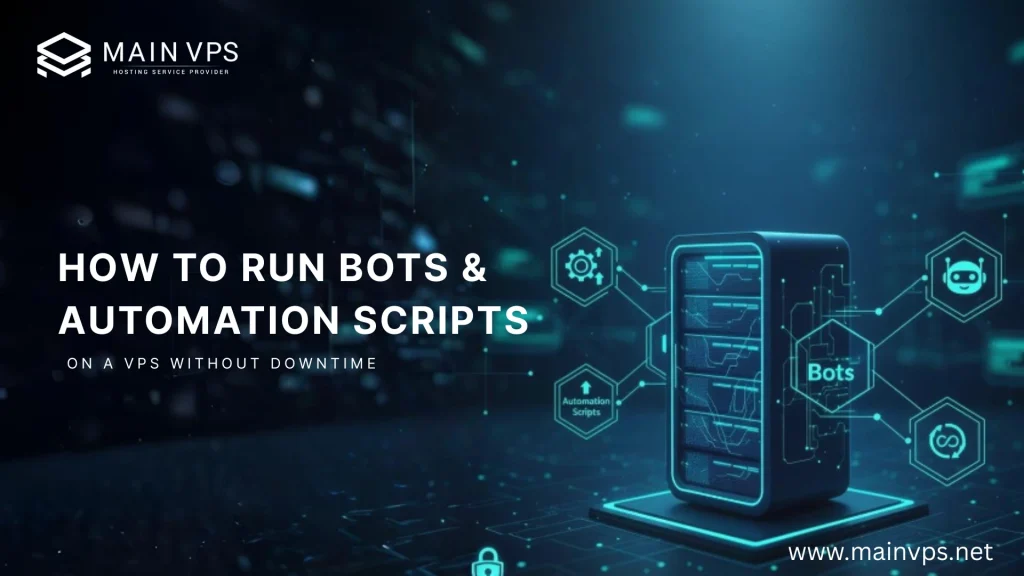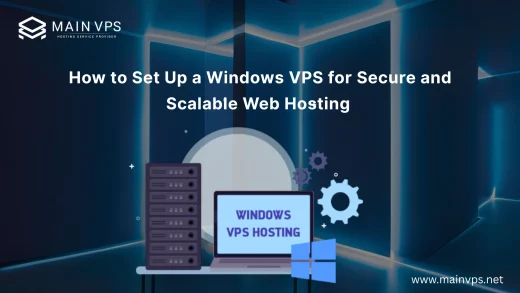
If you’ve ever tried running a bot or automation script on your personal laptop, you know the pain. The script stops as soon as your internet drops, the battery dies, or you close the lid. That’s exactly where a VPS (Virtual Private Server) comes in — giving your bots a stable, always-online environment to run 24/7.
In this tutorial, I’ll show you how to set up and run bots, or automation scripts, on the VPS without interruption. Whether you’re automating social-media tasks or scraping data, operating trading bots, or batch processing files, this step-by-step procedure will ensure that your bots are up and running, safe and effective.
Why Use a VPS for Bots & Automation?
Running bots locally is like trying to keep a coffee machine running in a backpack — it works for a while, but it’s messy, unreliable, and not designed for the job. A VPS, on the other hand, offers:
- 24/7 Uptime → Your scripts keep running even if your PC is off.
- Dedicated Resources → No interruptions from background apps or power-saving features.
- Remote Access → Manage bots from anywhere using SSH or RDP.
- Scalability → Easily upgrade CPU/RAM if your bots need more power.
- Security → Isolated environment to protect your scripts and data.
💡 Pro Insight: Many developers I’ve worked with moved trading bots from home PCs to VPS, and uptime alone improved results dramatically. Downtime often meant missed trades — VPS fixed that.
Step 1: Choose the Right VPS for Your Bots
Not all VPS plans are the same. The best VPS for bots depends on:
- Type of bots/scripts:
- Lightweight tasks (simple scrapers, cron jobs) → 1–2 GB RAM is fine.
- Heavy bots (trading, ML scripts, multiple scrapers) → 4–8 GB RAM & SSD storage.
- Operating system:
- Linux VPS for Python, Node.js, Bash scripts.
- Windows VPS for .NET, PowerShell, or GUI-based bots.
- Server location: Pick one close to your target platform (e.g., a US-based VPS for US social platforms, India VPS for local apps).
👉 At MainVPS, we provide Linux and Windows VPS hosting in India and the USA, optimized for automation and always-on workloads.
Step 2: Connect to Your VPS
- Linux VPS (SSH):
Open your terminal and run:ssh user@your_vps_ip - Windows VPS (RDP):
Use Remote Desktop Connection on your PC or Microsoft Remote Desktop on Mac.
Once logged in, you’re ready to set up your bot environment.
Step 3: Set Up the Environment for Your Bots
Depending on your bot’s language, install the necessary runtimes:
- Python bots:
sudo apt update && sudo apt install python3-pip -y - Node.js bots:
curl -sL https://deb.nodesource.com/setup_18.x | sudo -E bash - sudo apt install -y nodejs - .NET or Windows bots:
Use the Windows VPS to install .NET Framework, MSSQL, or other dependencies via GUI.
💡 Pro Insight: Always create a virtual environment (Python venv or Node.js project folder) to keep dependencies clean and organized.
Step 4: Keep Bots Running 24/7 (No Downtime)
This is where most people go wrong — they launch the script, close the terminal, and the bot stops. To prevent downtime, use one of these methods:
Linux VPS:
- tmux or screen (best for beginners)
- Start your bot inside a
tmuxsession. Even if you disconnect, it keeps running.
tmux new -s bot python3 mybot.pyDetach:Ctrl+b, d→ Bot keeps running. - Start your bot inside a
- systemd service (production-level)
Create a systemd service file so your bot auto-starts after reboot.[Unit] Description=My Bot [Service] ExecStart=/usr/bin/python3 /home/user/mybot.py Restart=always [Install] WantedBy=multi-user.target - PM2 (for Node.js)
npm install -g pm2 pm2 start mybot.js pm2 startup pm2 save
Windows VPS:
- Use Task Scheduler to run scripts on startup.
- Or install a bot manager tool (like AlwaysUp) to keep scripts running as services.
Step 5: Monitor and Optimize Performance
Bots can hog CPU, memory, or even crash without you noticing. To keep things smooth:
- Linux tools:
htop,journalctl,pm2 monit. - Windows tools: Task Manager, Event Viewer.
- Remote alerts: Use uptime monitoring tools like UptimeRobot or custom log alerts.
💡 Pro Insight: I’ve seen bots slow down entire VPS servers because they had memory leaks. Setting up monitoring and restarts saved hours of downtime.
Step 6: Secure Your VPS
Bots often interact with APIs, credentials, or private data — so securing your VPS is critical.
- Use SSH keys instead of passwords (Linux).
- Enable firewall rules (allow only needed ports).
- Regularly apply security updates.
- Store API keys in environment variables, not plain code.
- Enable backups in case of crashes.
Step 7: Scale When Needed
As your bots grow, so will resource demands. Thankfully, VPS hosting is scalable:
- Upgrade RAM/CPU instantly.
- Add more storage for logs or large datasets.
- Run multiple VPS servers if you need load distribution.
👉 A client running multiple Telegram bots scaled from a 2 GB VPS to an 8 GB one within weeks — smooth, no migration headaches.
Final Thoughts
Running automation and bots on the virtual server is the best method of ensuring the highest level of performance, reliability and scaling. In contrast to running scripts locally the VPS gives you 24/7 accessibility as well as dedicated resources. secure environments which can be expanded to meet the demands of your business.
- For small projects → Start with a lightweight VPS.
- For trading, scraping, or enterprise bots → Go with higher RAM, SSDs, and monitoring.
- For critical automation → Set up services/systemd for true “always-on” uptime.
👉 Looking for reliable hosting? At MainVPS, we offer Windows and Linux VPS hosting tailored for developers, businesses, and automation enthusiasts who want bots that never sleep.
FAQs: Running Bots on VPS
Q1: Can I run multiple bots on the same VPS?
Yes — as long as your VPS resources (CPU/RAM) can handle them.
Q2: Which is better for bots — Linux or Windows VPS?
Linux VPS is best for Python/Node.js scripts. Windows VPS is better for .NET, PowerShell, or GUI-based bots.
Q3: Will my bots stop if I disconnect from SSH/RDP?
Not if you use tmux, screen, PM2, or Windows Task Scheduler. These keep bots running after logout.
Q4: Do I need a high-end VPS for bots?
Not always. Simple bots run fine on 1–2 GB RAM VPS. Heavy trading/data bots need more.
Q5: Can I use a VPS for web scraping bots?
Yes, but check the website’s terms of service. Use proxies responsibly to avoid blocks.





